Lake Constance—known as Bodensee in German—straddles the borders of Germany, Austria, and Switzerland. It’s a place where gentle waves lap along varied shorelines, dotted by vineyards, medieval towns, and modern marinas. You’re likely searching for a scenic escape brimming with both relaxation and adventure. Perhaps you want to cycle through rolling hills, sample local wines, or wander picturesque Old Towns. You’re also keen on practical tips—transport options, dining highlights, or hidden gems. Rest assured, this travel guide will help you sort through it all, ensuring your Lake Constance trip shines.
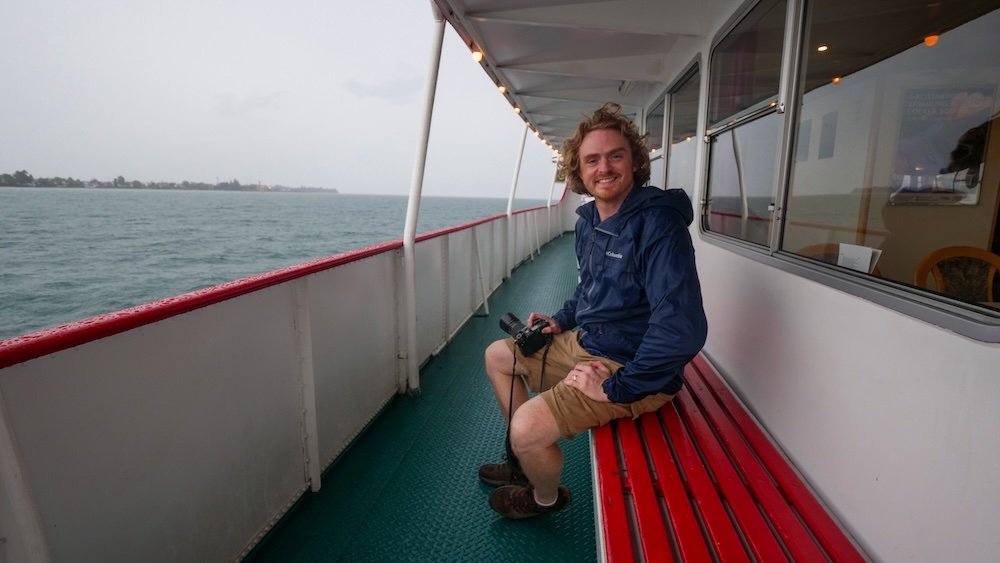
Planning a cross-border getaway can be tricky: which side of the lake is best? How do ferries work? Are there enough activities for kids or different travel styles? You might worry about language barriers (three countries, three languages!), or you may feel overwhelmed by the sheer volume of attractions scattered around 270 kilometers of shoreline. We’ll break down the confusion, providing straight-to-the-point advice so you can relax and enjoy your holiday.
Our Travel Video From Lake Constance on Samuel and Audrey YouTube Channel: Nomadic Samuel + That Backpacker as hosts
Why Lake Constance?
This travel guide suits a wide range of travelers. Families hunting for safe swimming spots, couples longing for romantic lakeside sunsets, and adventure buffs seeking challenging hikes or windsurfing opportunities. Foodies keen on tasting the region’s freshwater fish and fine wines will also feel at home. Essentially, if you love nature, culture, and the easy pace of waterfront living, Lake Constance will captivate you.
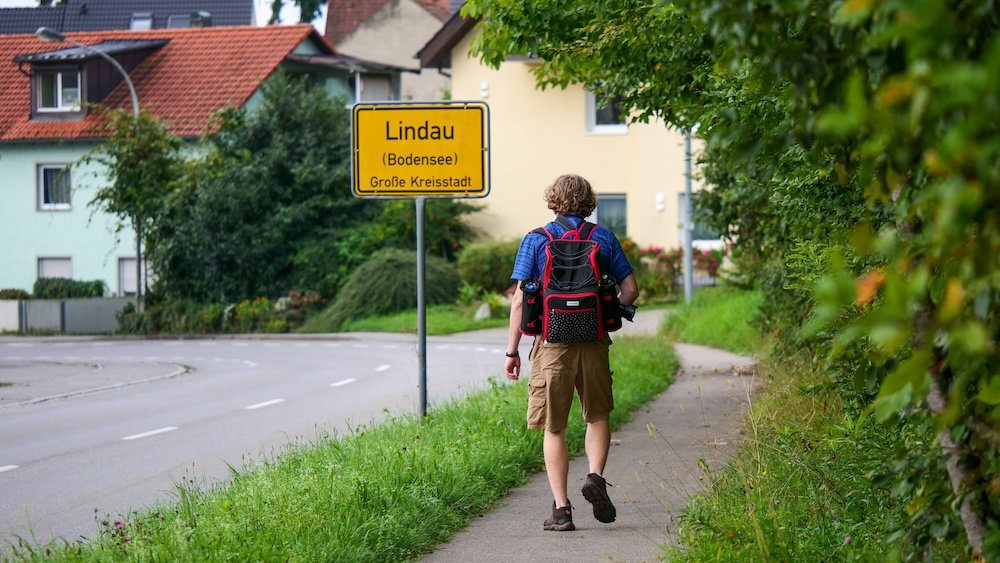
Towns like Konstanz and Lindau brim with medieval flair, while modern resorts and wellness centers cater to those craving pampering. Vineyards spill down gentle slopes into the lake, reflecting an ancient tradition of wine-making. Compact distances and efficient transport—ferries, rail lines, bike paths—make multi-country hopping unusually simple.
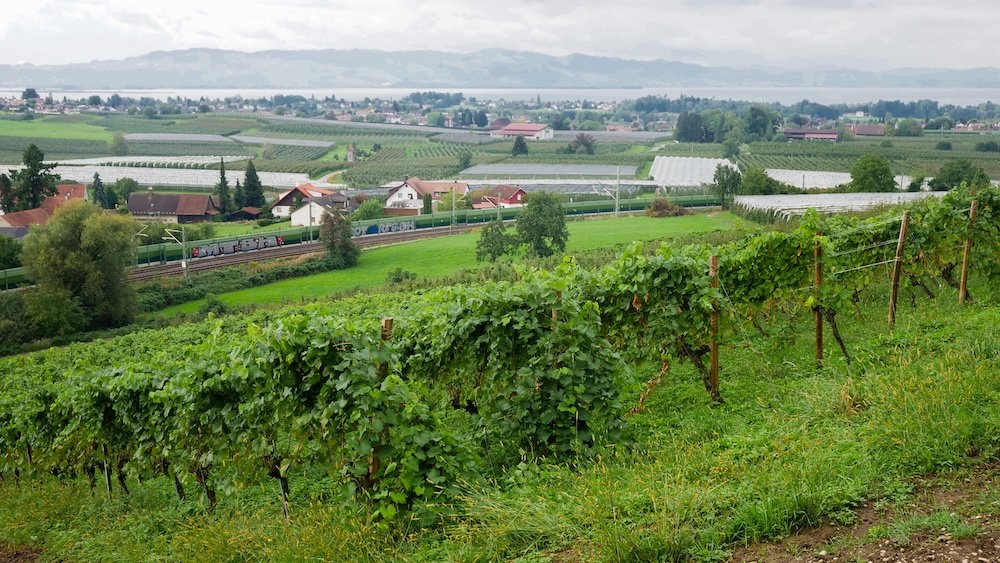
Below, you’ll find the Top 10 Things To Do, from scenic bike tours to laid-back wine hikes and a ferry ride that glides across international waters. After that, we’ll cover local eats and drinks, tours, accommodations, day trips, transport guidance, and a final wrap-up to tie everything together. Lake Constance beckons with open vistas and a warm, welcoming vibe. Let’s set sail, shall we?
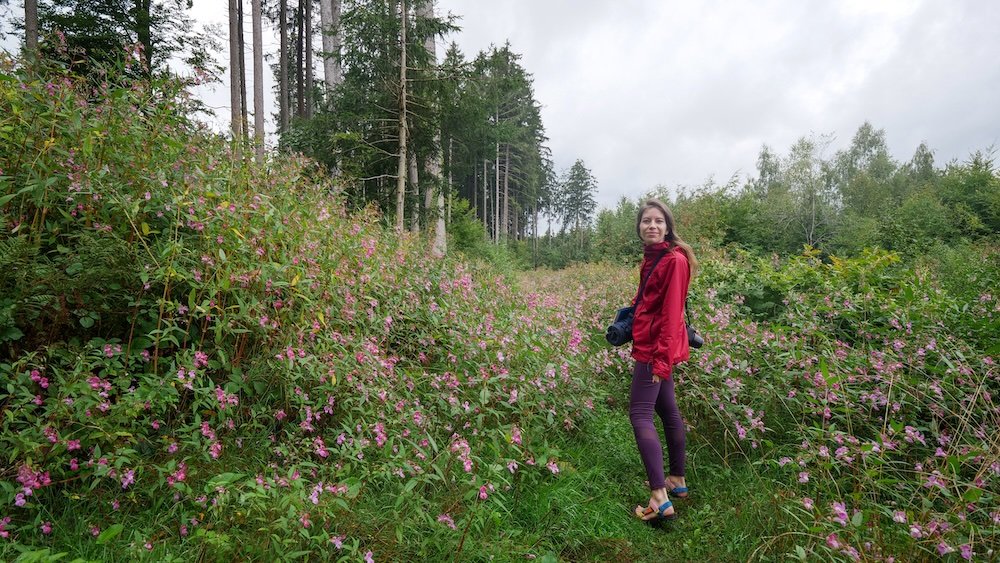
Top 10 Things To Do on Lake Constance For Visitors
Lake Constance rewards travelers with outdoor adventures, cultural highlights, and gastronomic delights. If you’re formulating your must-see list, these 10 experiences blend tradition, nature, and modern flair, capturing the lake’s essence.
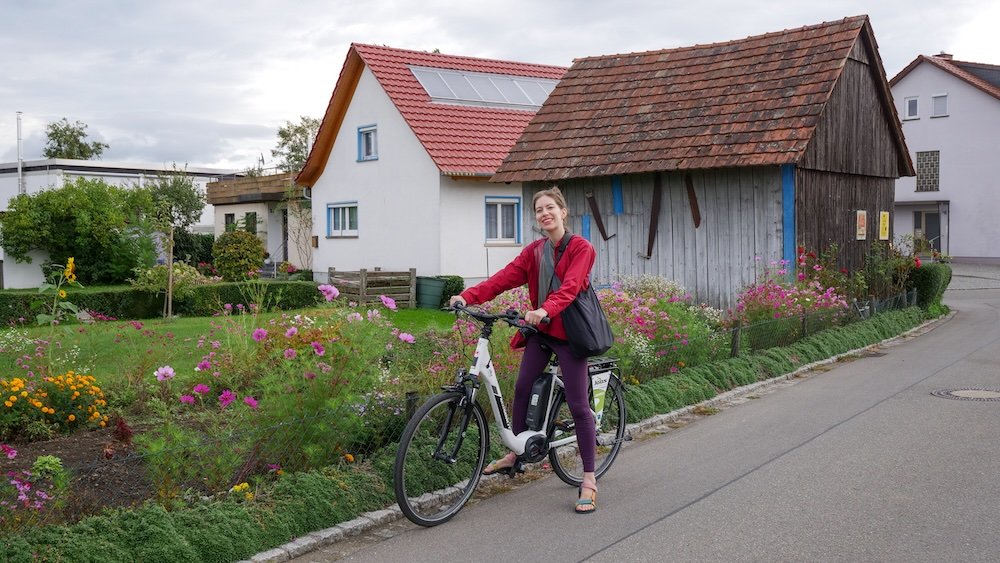
1) Biking Food Tour of Höri Peninsula Starting in Radolfzell
The Höri Peninsula, jutting into the western part of Lake Constance, offers scenic biking paths lined with orchards, meadows, and hidden produce stands. Begin your adventure in Radolfzell, a historic town featuring cobblestone streets and half-timbered houses. Local tour operators host guided bike excursions, stopping at farmsteads or family-run cafés that dish out specialties like smoked fish, local cheese, and homemade fruit syrups. Expect gentle hills rather than steep climbs, making the route friendly to various fitness levels. With every spin of the wheel, you’ll pass vibrant fields of flowers or rows of apple trees swaying in the breeze. The entire experience blends fresh air, wholesome eats, and an intimate encounter with the region’s farm-to-table ethos.
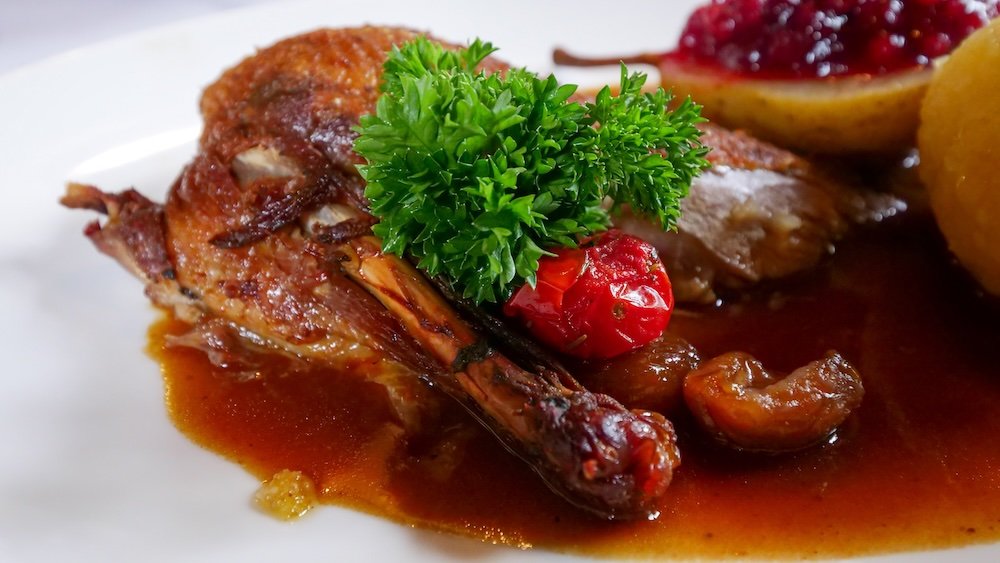
- Key Snacks: Fresh pear cider, artisanal breads, and seasonal fruits.
- Photo Ops: Rolling farmland, lake vistas, and occasional glimpses of Swiss mountains.
- Eco-Focus: Many local farms follow organic or sustainable practices, reflecting the area’s love for nature.
Tip: Ask farmers about their specialties—some might let you try rare jam flavors or freshly churned butter you won’t see in regular shops.
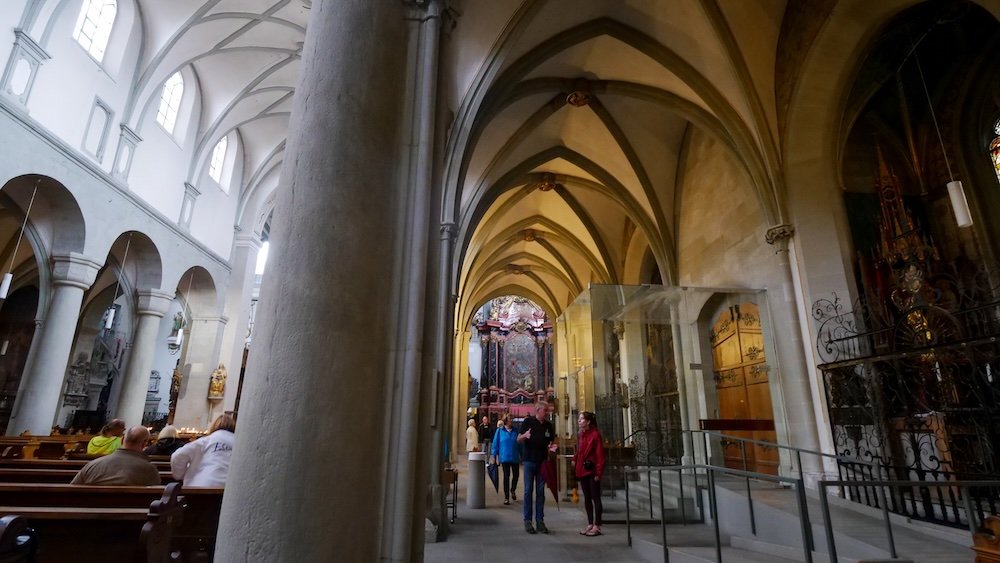
2) Walking Tour of Konstanz
Konstanz is the largest town on the lake, boasting a lively waterfront, a rich medieval core, and the proud Konstanz Cathedral. A guided walking tour delves into its layered history: from Roman outposts to thriving Middle Ages trade, and from Reformation-era upheavals to contemporary university life. Quaint alleyways conceal painted facades and half-timbered wonders, many accented with vibrant flower boxes. The harbor area charms with its Imperia statue, a rotating figure that nods to Konstanz’s storied past. Cafés bustle along the promenade, serving up robust coffees and fresh pastries as sailboats tug gently at their moorings. Your steps trace centuries, each corner unveiling a fresh anecdote or comedic statue that underscores the city’s personality.
- Must-See Landmarks: The Konzilgebäude (Council Building), colorful Rathaus, and historic merchant houses.
- Market Scene: If you time it right, you’ll catch open-air stands hawking local honey, cured meats, or produce.
- Student Vibe: University influences keep the nightlife scene vibrant, especially near the Old Town’s cozy bars.
Tip: Pause at the harbor around sunset—the golden light against medieval silhouettes is postcard-worthy.
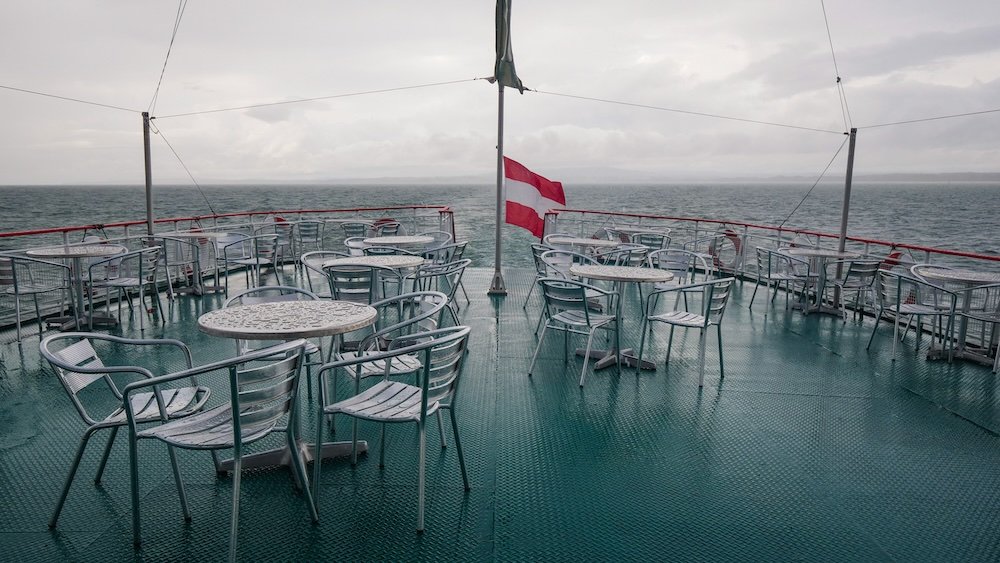
3) Ferry Ride Across Lake Constance from Konstanz to Lindau
A ferry ride across Lake Constance feels equal parts transportation and scenic cruise. Departing from Konstanz, you’ll watch the skyline recede as the boat glides toward Lindau, a Bavarian jewel perched on an island near the lake’s eastern shore. The journey offers sweeping views of rolling hills, distant Alpine peaks (if skies cooperate), and clusters of sailboats skimming the water. Onboard, you might find a modest café selling hot drinks and snacks, perfect for warming up on breezy days. Locals use these ferries as routine transit, yet for visitors, it’s an immersive experience that underscores the lake’s vastness. You arrive in Lindau greeted by the iconic harbor entrance, flanked by a lion statue and a lighthouse, setting the tone for further exploration.
- Ferry Frequency: Seasonal schedules vary; summer sees more frequent crossings.
- Travel Time: Typically around an hour or so, depending on stops.
- Multi-Country Flair: The ferry might pass waters near Switzerland, emphasizing Lake Constance’s international character.
Tip: Grab a seat on the upper deck for panoramic angles—and have your camera ready for those Alpine glimpses.
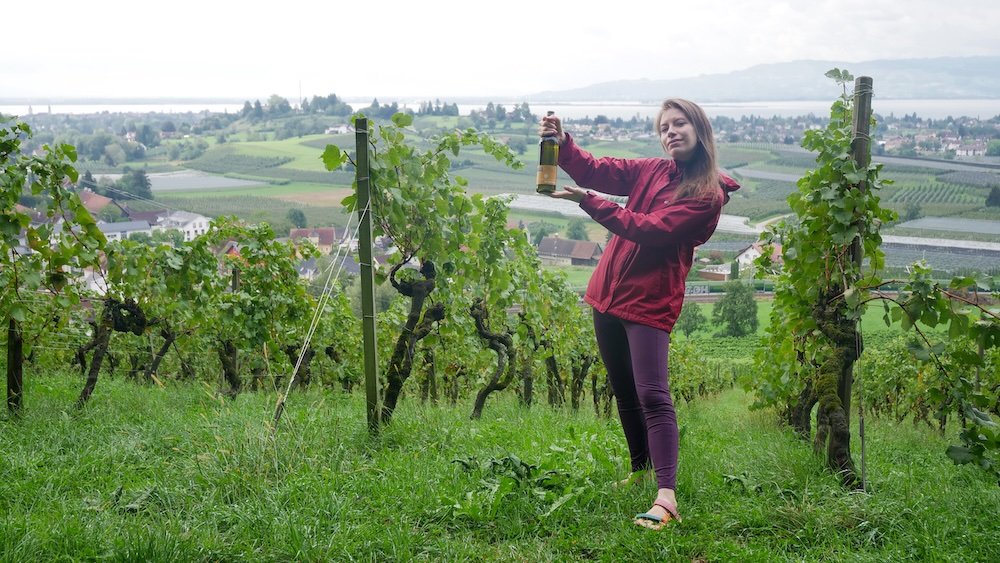
4) Wine Hike at Weingut Haug in Lindau
Once you land in Lindau, a wine hike at Weingut Haug merges vineyard vistas with local viniculture. The walk meanders through gently sloping grapevines overlooking the shimmering lake. Knowledgeable staff or guides often share tidbits on soil types, microclimates, and Haug’s winemaking methods. You’ll also sample their portfolio—think crisp whites and robust reds that reflect the region’s climate. Savoring sips in the open air, with the lake in the distance and vines at your feet, feels downright magical. It’s a hands-on introduction to Bodensee wines, ensuring you not only taste but also learn.
- Highlight Varietals: Müller-Thurgau, Grauburgunder (Pinot Gris), and occasional reds like Spätburgunder (Pinot Noir).
- Tour Add-Ons: Some experiences pair wines with local cheeses, breads, or even chocolate.
- Shop: If you fancy a bottle, the winery typically sells direct—great as a souvenir or evening indulgence.
Tip: Wear sturdy but comfortable shoes—vineyard paths can be uneven, especially if you’re climbing slopes.
5) Cruise the Untersee on a Paddle Steamer
For a dash of nostalgia, hop on a paddle steamer cruising the Untersee, the smaller western arm of Lake Constance. The rhythmic churning of old-school paddles complements panoramic windows framing passing villages and reed-lined shores. Guides sometimes narrate points of interest—like ancient castle ruins or nature reserves teeming with birdlife. You’ll also sense a relaxed, slow-travel vibe, encouraging passengers to sip a beverage, lounge on deck, and watch the world drift by. Some cruises offer snack bars or even light meals, featuring local fish or pastries. The experience merges classic maritime charm with gentle, scenic exploration.
- Popular Stops: Towns like Steckborn or Ermatingen on the Swiss side, or Radolfzell and Gaienhofen in Germany.
- Family-Friendly: Kids love the novelty of an old-style steamer—some operators even let them peek at the engine.
- Photography: Crisp morning or late afternoon rides yield the best light for capturing waterside silhouettes.
Tip: Book ahead in peak season—these nostalgic boats fill quickly, especially on sunny weekends.
6) Visit Mainau Island, the “Flower Island”
Mainau Island sparkles with blooms from early spring through late autumn. Owned by the Bernadotte family, this horticultural marvel features themed gardens—like the Italian Rose Garden, vibrant butterfly house, and tropical palm house. Paths meander between sculptures, water features, and sweeping lake views. Seasonal highlights include tulips in spring, roses in summer, and dahlias in fall, each display meticulously planned. Families delight in the petting zoo and playgrounds, while romantics find hidden benches ideal for quiet reflection. Mainau’s floral splendor pairs perfectly with breezy lakeside air, making it a must for nature enthusiasts.
- Entry Fee: Tickets can be pricey, but the gardens’ caliber justifies the cost.
- Dining: Multiple on-site cafés or restaurants serve fresh fare, some with lake panoramas.
- Accessibility: Wheelchair-friendly paths cover much of the island; check a map at the entrance.
Tip: Go early or late in the day—crowds peak around midday, especially when the weather’s lovely.
7) Tour Meersburg Old Castle and Vineyards
Meersburg, perched on steep shores, boasts an Old Castle (Alte Burg) that claims to be Germany’s oldest inhabited fortress. Inside, you’ll find medieval weaponry, suits of armor, and cozy chambers from a bygone era. Outside, narrow alleys snake downhill, lined with half-timbered houses, wine taverns, and colorful shopfronts. The town’s hillside location also invites quick vineyard visits—tasteful local wines that reflect the mild climate. You can cap your exploration with a scenic promenade stroll by the lakeside, accompanied by the clang of church bells echoing from above. Meersburg’s blend of fortress history and tranquil grapevines offers a well-rounded cultural immersion.
- Castle Highlights: Knight’s Hall, a dungeon, and lofty battlements offering panoramic water views.
- Wine Culture: Search for taverns labeled “Besenwirtschaft” (broom tavern), signifying fresh-off-the-press wine.
- Kids’ Engagement: Some castle sections include interactive displays, keeping younger visitors amused.
Tip: Climb the castle tower for arguably the best vantage of Meersburg’s rooftops spilling toward the lake.
8) Explore Insel Reichenau’s Monasteries and Gardens
Reichenau, a UNESCO-listed island, is famed for its monastic heritage and centuries-old farmland. Three medieval churches—St. George, St. Peter and Paul, and the Minster of St. Mary and Marcus—speak of a formidable abbey that once shaped European culture. Outside, meticulously tended vegetable fields stretch toward the lake, showcasing the island’s continuing agricultural traditions. Small museum exhibits detail Reichenau’s spiritual and artistic influence across the Middle Ages. Cycling or walking loops let you soak in serene shorelines, where fishermen still cast nets at dawn. The harmony of sacred architecture and lush farmland is a powerful reminder of Reichenau’s contemplative aura.
- Local Produce: Island-grown produce supplies many regional markets—tomatoes, lettuce, cucumbers, and more.
- Boat Access: Some visitors arrive by ferry, enjoying an early morning crossing from mainland towns.
- Art History: Frescoes in St. George are a must-see for medieval art enthusiasts.
Tip: Pair your visit with a picnic—fresh local veggies, bread, and lake views set the stage for a rejuvenating afternoon.
9) Paddleboarding or Kayaking at Strandbad Eichwald (Lindau Area)
For water-sport fans, Strandbad Eichwald near Lindau is prime territory for kayaking or stand-up paddleboarding (SUP). The beach area has rental stations offering equipment and quick lessons if you’re new to paddling. Once afloat, you’ll glide across calm waters, with Lindau’s historic skyline in one direction and Austrian or Swiss Alps rising on the horizon. Morning hours typically mean glassy conditions—ideal for novices finding their balance. Meanwhile, a waterside beer garden and snack stands reward your efforts once you return to shore. This aquatic break lends a playful dimension to a day of sightseeing or hiking.
- Entry Fee: Some lidos charge a small admission, so carry a bit of cash.
- Gear: If you have sensitive feet, water shoes can help on pebble beaches.
- Safety: Wear a life jacket, especially if venturing beyond the shallow zone.
Tip: Go on weekdays if you prefer quieter waters—weekends see a surge of locals escaping the heat.
10) Track Down Stilt Houses at Pfahlbaumuseum Unteruhldingen
Pfahlbaumuseum near Unteruhldingen resurrects prehistoric lake dwellings, giving a window into how early settlers lived. These stilt houses replicate Bronze Age and Stone Age architecture, perched above the water for protection. Wooden walkways link huts brimming with replica tools, pottery, and furnishings. Costumed interpreters sometimes demonstrate ancient crafts—like grinding grain or shaping flint. A lakeside café offers a restful spot to contemplate how people survived millennia ago. Kids particularly love exploring the huts’ interiors, fueling their imaginations about early lake-based societies.
- Interactive Exhibits: Try weaving or watch live demos of tool usage.
- Photogenic: The stilt huts against the water create a timeless, rustic panorama.
- Audio Guides: Multiple languages help visitors grasp the significance of each archaeological detail.
Tip: Arrive mid-morning—it’s less busy, and you’ll have ample time to roam before midday crowds gather.
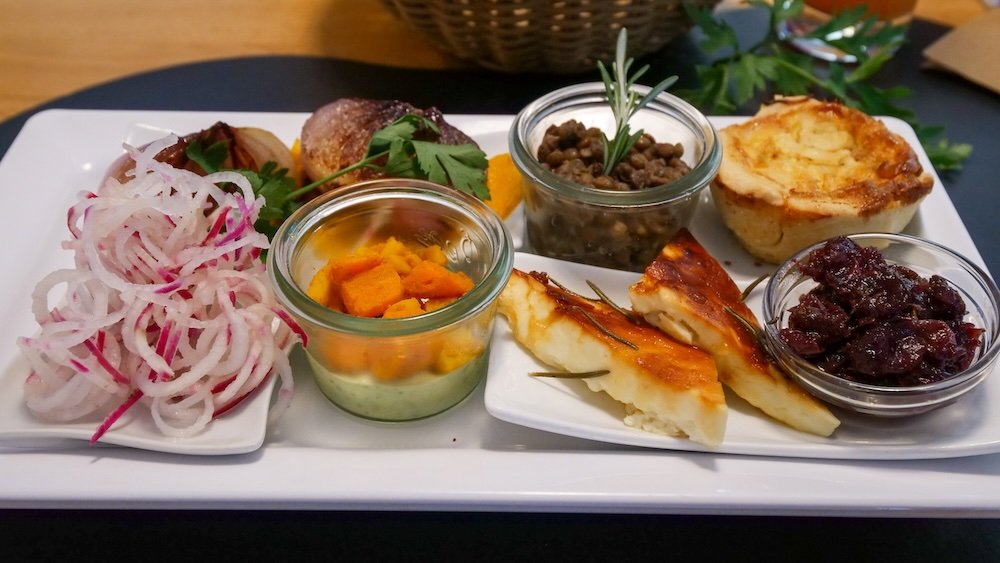
What To Eat and Drink on Lake Constance, Germany
The Lake Constance region, with its microclimates and cross-border influences, boasts a culinary tapestry that’s fresh, flavorful, and steeped in tradition. Below are highlights of regional foods and beverages that turn your things to do list into a mouthwatering journey.
Freshwater Fish
Felchen (whitefish) from the lake is a star on many menus. Light and delicate, it’s often pan-fried or grilled, accompanied by buttery potatoes or a crisp salad. Kretzer (perch) also appears, sometimes breaded or served as fillets with lemon. Most restaurants promoting “Fischspezialitäten” likely serve these fish varieties, guaranteeing local catches. Paired with a glass of local wine, these fish dishes encapsulate Lake Constance’s essence: fresh, simple, and profoundly satisfying.
Tip: Ask for daily catches—some chefs highlight what’s been netted that morning, ensuring peak freshness.
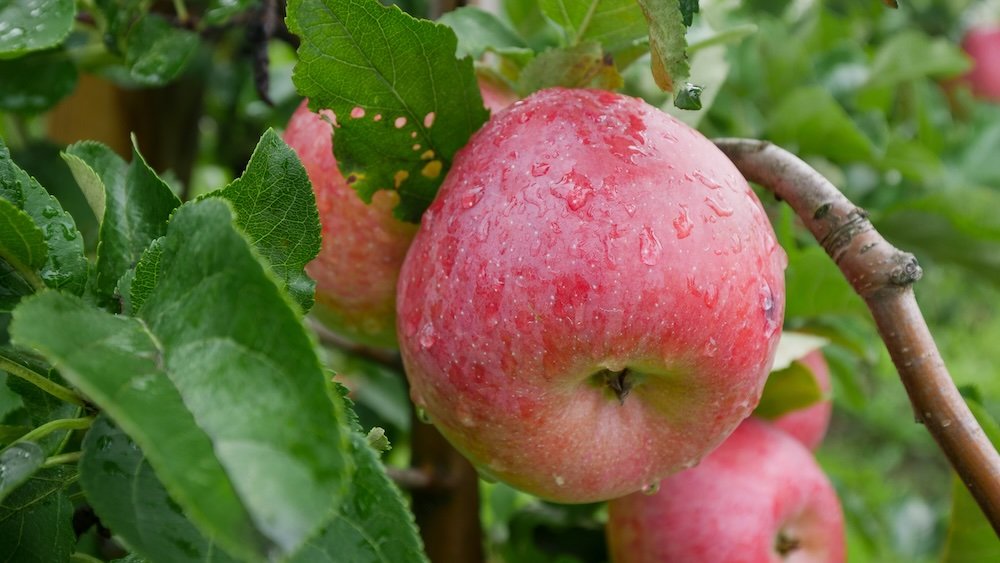
Seasonal Produce
The lake’s fertile shores yield sweet asparagus in spring, bright strawberries in summer, and orchard fruits galore. Don’t miss succulent apples—pressed into juices or ciders. Farmers markets also showcase hearty pumpkins in autumn, which morph into stews or roasted side dishes. The mild climate and rich soils encourage sustainable farming, so you’ll find Bio (organic) labels frequently. Trying a seasonal special—like spargel (asparagus) soup or fresh pears—is a must-do for local authenticity.
Tip: Look for “Hofläden” (farm shops) or small roadside stands selling produce direct from fields.
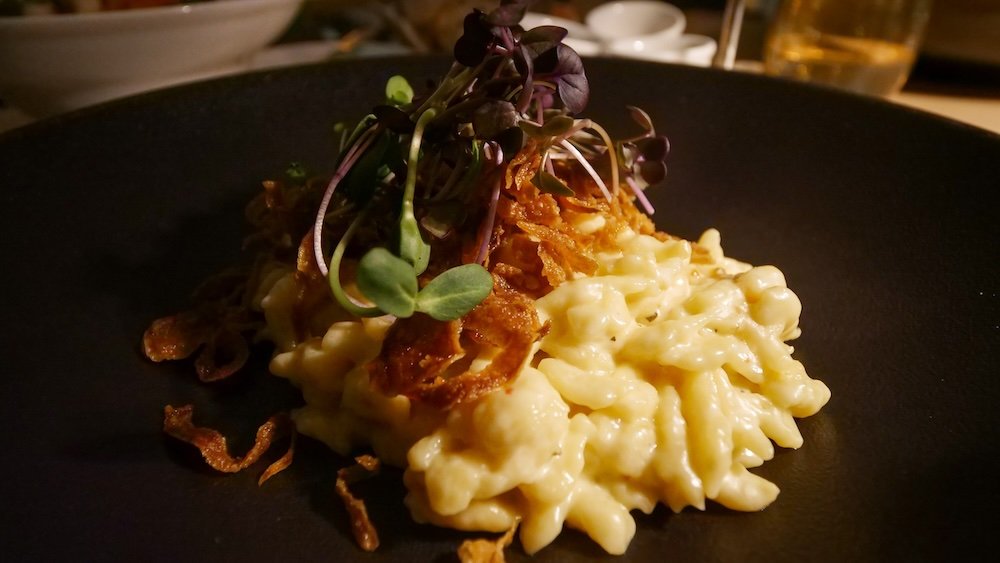
Local Specialties
- Swabian Maultaschen: Dumplings stuffed with meat or spinach, reminiscent of ravioli. Often served in broth or pan-fried with onions.
- Flammkuchen: A thin-crust delight topped with crème fraîche, onions, and bacon—borrowing Alsatian flair.
- Schupfnudeln: Hand-rolled potato noodles, typically sautéed in butter and sometimes tossed with sauerkraut or bacon bits.
These hearty dishes reflect German comfort food with a dash of cross-border influence. Expect generous portions—German hospitality often translates into full plates.
Tip: Sample a “Tellergericht” (plate dish) from local taverns for an affordable, homestyle meal.
Sweet Treats & Desserts
Black Forest Cake might be the region’s famous neighbor, but you’ll also see fruit tarts highlighting orchard bounty. In autumn, plum cakes (Zwetschgenkuchen) hit many bakery windows. Linzer Torte—with a jam-filled lattice top—appears in some cafés, nodding to Austrian connections. Pair your slice with robust coffee, or even sweet cider if you’re in a more experimental mood. Cafés thrive on a slow-paced, cozy tradition known as “Kaffeepause,” perfect for unwinding after a day by the lake.
Tip: Investigate the pastry display—some lesser-known confections or local pies can be just as memorable as the region’s famous cakes.
Wine & Other Drinks
- Wine: Vineyards near Meersburg, Lindau, and the entire Lake Constance region produce crisp whites (Pinot Gris, Müller-Thurgau) and silky reds (Pinot Noir). Tasting rooms often invite travelers to swirl, sip, and learn about terroir.
- Beer: Regional breweries supply classic German pilsners, wheat beers, and occasionally craft experiments.
- Apfelschorle: A non-alcoholic staple—apple juice mixed with sparkling water—refreshing on hot days.
Tip: Visit a local “Besenwirtschaft”—temporary taverns run by winemakers themselves, offering direct-from-the-barrel tastings and simple meals.
Dining Etiquette & Tips
- Cash vs. Card: While more places accept cards nowadays, smaller eateries might still prefer euros in hand.
- Reserving Tables: Lakeside or popular restaurants fill up quickly in high season—call or book online.
- Seasonal Menus: Keep an eye out for “Saisonkarte,” featuring asparagus, berries, or game meat, depending on the time of year.
Tip: Leave a small tip—round up or add ~5-10% to show appreciation for good service.
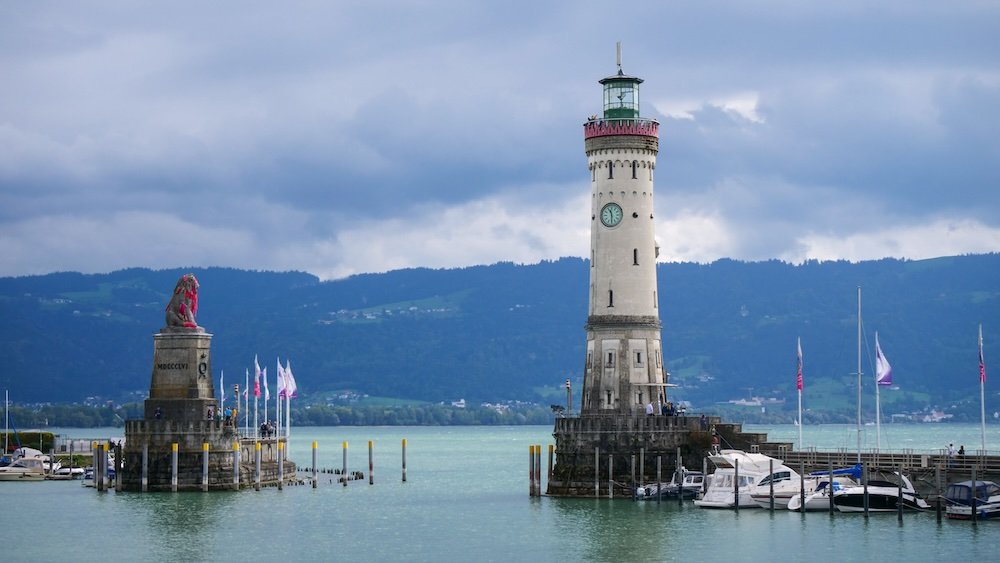
Tours For Visitors To Lake Constance, Germany
Structured tours around Lake Constance blend leisurely sightseeing with deep dives into regional culture. If you’re seeking things to do beyond just wandering, these guided experiences highlight everything from medieval history to water sports. Below are a handful of popular tour options to spark your itinerary.
1) Classic Lake Cruise Tours
Cruise operators around Konstanz, Meersburg, or Lindau provide sightseeing boat rides complete with narrated commentary. Some tours circle the lake’s main attractions, pointing out medieval castles perched on hills, or islands like Mainau brimming with flowers. Shorter cruises might last an hour or two, while day-long excursions dock at multiple ports for exploration. You’ll gain a fresh vantage of scenic shorelines, each region sporting distinct flavors—Bavarian vibe in Lindau, more Swiss-esque near Romanshorn, etc. Onboard amenities often include small cafés or snack counters. This gentle pace suits families, couples, or anyone desiring panoramic views minus the hiking.
- Booking: Ferry companies or local ticket offices along the harbor sell day passes or single-route tickets.
- Season: Summer sees frequent departures; winter schedules are sparser but still possible for some routes.
- Language: Commentary is commonly in German and English, occasionally French too.
Tip: Arrive 20-30 minutes early for a prime seat on the deck, especially in high season.
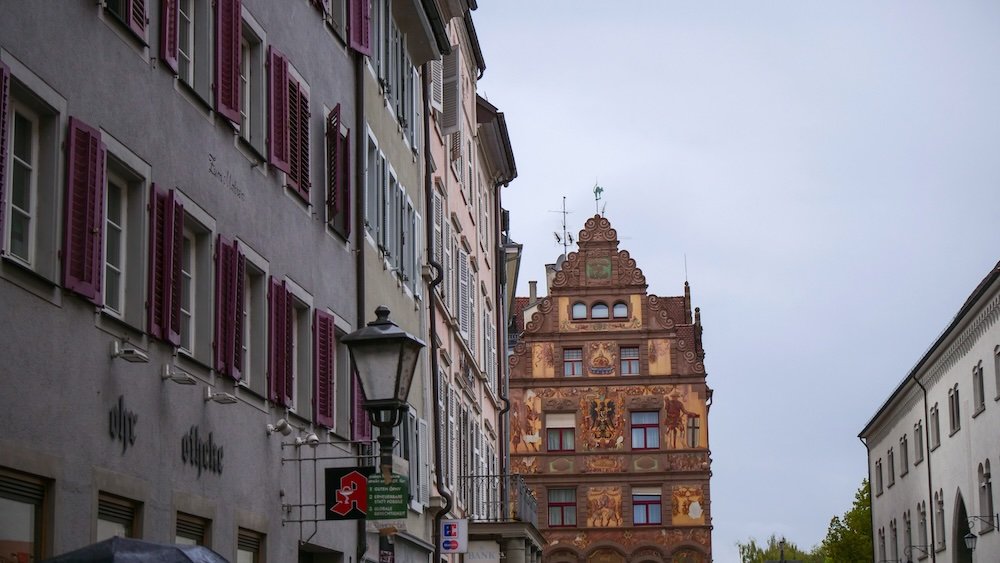
2) City & Culture Tours (Konstanz, Meersburg, Lindau)
For a dose of medieval charm, sign up for guided walking tours in towns like Konstanz, Meersburg, or Lindau. Locals lead you through narrow lanes, highlighting half-timbered buildings, city walls, and hidden courtyards bursting with flowers. They’ll recount tall tales of local nobility, past conflicts, and cross-lake trade. In Konstanz, tours often spotlight the Cathedral district and the harbor’s rotating Imperia statue. Meersburg tours revolve around the Old Castle’s long history and wine culture, while Lindau guides show off the island’s storied harbor entrance. The advantage of these tours? Nuanced context you won’t glean from just strolling solo.
- Group Size: Tends to be intimate (5-15 people), though larger outfits exist.
- Duration: Usually 1-2 hours, enough to glean essential city highlights and a few stories.
- Possible Extras: Some tours bundle museum tickets, local tastings, or vineyard visits.
Tip: Check if the tour covers private interiors—some allow exclusive peeks into historical rooms not generally open to the public.
3) Nature & Adventure Tours (Hiking, Kayaking)
Looking for more active escapades? Hiking tours weave through orchard trails, woodland paths, or even climbs up vantage points like the Pfänder near Bregenz. Guides share knowledge about local flora, fauna, and the lake’s geological formation. If water calls, kayaking or stand-up paddleboard tours let you stroke the calm waves, maybe exploring hidden bays or smaller islands. Some operators even run sunset paddles—imagine gliding across golden waters, the Alps tinted pink in the distance. Whether you want a half-day trek or a multi-hour kayak trip, these tours supply gear, instructions, and local insight.
- Fitness Levels: Many tours adapt routes to your comfort, from easy strolls to challenging slopes.
- Gear Provided: Kayak tours usually include life vests; hiking tours might loan trekking poles.
- Eco-Focus: Guides often highlight wildlife habitats and conservation efforts around the lake.
Tip: Bring snacks—bites of local cheese or chocolate bars can boost energy mid-hike or post-paddle.
4) Wine & Culinary Tours
With vineyards blossoming around Meersburg, Lindau, and beyond, wine tours are a tasteful way to explore Lake Constance. These might include short vineyard walks, cellar visits, and structured tastings led by passionate winemakers. Some tours push deeper into the gastronomic realm, pairing wines with local produce or multi-course meals. Alternatively, cheese and orchard tours spotlight artisanal dairies or fruit farms, culminating in an array of samples. The reward? A deeper grasp of how the lake’s microclimate shapes each sip or bite.
- Transport: Minivans or buses often ferry you between wineries or specialty farms.
- Seasonal Variation: Harvest time (late summer/fall) offers peak excitement and sometimes hands-on picking.
- Language: Book an English-friendly tour if you’re not fluent in German.
Tip: Watch for “Besenwirtschaften”—temporary pop-up taverns run by winemakers themselves, a hidden gem for true local flavor.
5) Cross-Border Day Tours
Lake Constance’s international nature invites cross-border tours, letting you sample Germany, Austria, and Switzerland in one day. Some routes begin in Konstanz, cross into Swiss towns like Kreuzlingen or Romanshorn, then hop a ferry to Austria’s Bregenz before looping back. Guides handle ferry tickets, highlight differences in architecture, and explain how border dynamics shaped local commerce. Along the way, you can catch glimpses of Swiss precision or Austrian alpine influence. These tours condense cultural variety into one efficient itinerary, perfect if time is tight but curiosity runs high.
- Duration: Typically full-day, 8-10 hours including travel and sightseeing breaks.
- Passport: Bring valid ID, though Schengen rules mean minimal formal checks.
- Cultural Taster: Dine on Swiss chocolates or Austrian pastries if you love comparing distinct cuisines.
Tip: Opt for an early start—each border crossing extends the day, and you’ll want unhurried exploration in each stop.
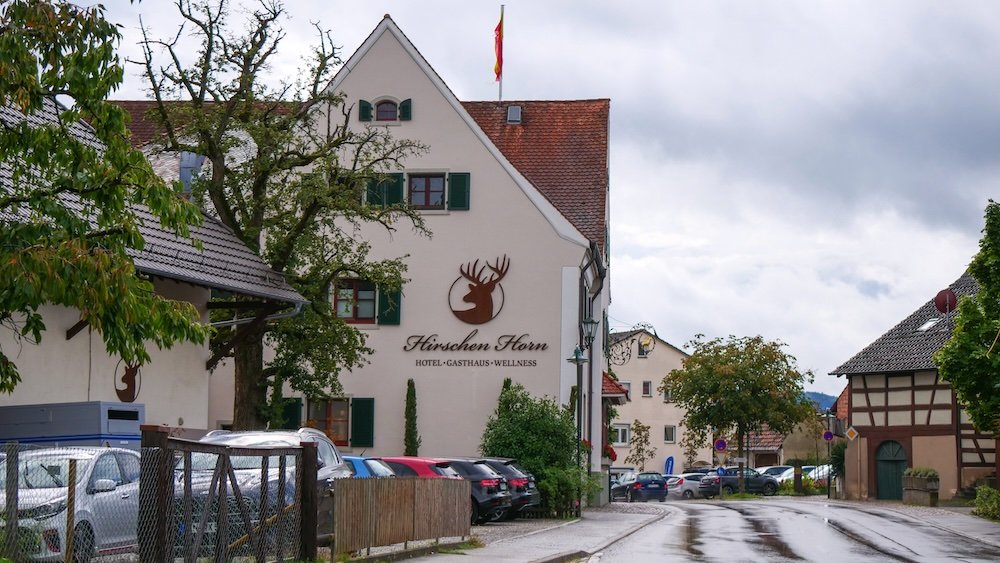
Lake Constance Accommodations Guide: Hotels, Guesthouses and Hostels
Where you stay at Lake Constance shapes your entire experience, from sunrise vistas to easy access to top things to do. Whether you want waterside elegance or cozy countryside charm, the region caters to varied budgets and styles. Here’s a rundown of accommodations near the German side of the lake, though many tips also apply to Swiss or Austrian shores.
Hotels
Lake Constance’s hotels range from grand lakeside resorts with private piers to more modest urban establishments near Konstanz or Friedrichshafen. Upscale options often boast wellness centers, swimming pools, and direct beach access—ideal for those craving a leisurely dip or scenic dinners over the water. Mid-range chains or independent properties typically situate near city centers, providing easy strolling distance to old towns and ferry terminals. Eco-friendly credentials appear in some hotels, reflecting the lake’s environmental mindset: solar panels, local produce at breakfast, and bike-rental services. If you travel during festivals or high season (June-August), book well ahead to nab your preferred dates.
- Prime Views: Seek listings labeled “Seeblick” (lake view) if you’re set on waterfront panoramas.
- Price Range: Summer nights can exceed €150-€200 for quality hotels, dropping in off-season.
- Breakfast: Many hotels offer a robust buffet featuring local fish, artisanal bread, fruit jams, and fresh coffee.
Tip: Check for half-board deals—some hotels combine room + dinner, saving time and money if you want minimal planning.
Guesthouses (Gasthöfe) & B&Bs
For warm, personal hospitality, guesthouses or bed-and-breakfasts excel. Often family-run, these places exude a homely vibe with fewer rooms and a direct line to local knowledge. You might find a converted farmhouse in orchard country, or a centuries-old half-timbered building in a quaint town square. Breakfast tends to highlight homemade jams, local cheeses, and possibly eggs from the owners’ chickens. The smaller scale also fosters more contact with hosts, who often share tips on hidden beaches or less-touristy viewpoints. Prices can be competitive, especially if you’re flexible about location.
- Decor: Expect rustic wooden beams, floral curtains, or modern updates depending on the property’s style.
- Booking: Smaller guesthouses might rely on phone or email reservations, so confirm details clearly.
- Off-Season: Some owners close in deep winter or reduce services—always double-check availability.
Tip: Look for “Bodenseehof” branding, sometimes indicating a local network of high-quality guesthouses near the lake.
Hostels
Hostels cater to travelers seeking budget-friendly stays or a social environment. Some cluster near Konstanz or Friedrichshafen—cities with student populations—and may provide private rooms in addition to dorm beds. Common rooms encourage mingling, ideal if you hope to find day-trip buddies or share travel tips. You’ll typically find self-catering kitchens, letting you whip up quick meals with market-fresh produce. Hostel staff are usually well-informed about local bus schedules, ferry routes, and cheaper activities. If you’re comfortable with simpler amenities, hostels free up cash for the lake’s other indulgences.
- Cost: Dorm beds might hover around €20-€30, private rooms around €50-€80.
- Quiet Hours: Some hostels enforce nighttime hush, helpful for a good sleep.
- Lockers: Bring your own padlock if you value extra security for your belongings.
Tip: Check if breakfast is included—some hostels offer a basic spread, boosting your daily budget.
Vacation Rentals & Apartments
For travelers wanting a “home away from home,” vacation rentals—Airbnb, Vrbo, local agencies—offer privacy, often with full kitchens. You can pick a lakeside condo with direct dock access or a rural cottage surrounded by rolling farmland. This approach suits families or groups who enjoy communal spaces for cooking or chilling. Weekly rates can be economical, especially if you cook your own meals. However, confirm how close you are to public transport or main roads if you’re not bringing a car.
- Amenities: Dishwashers, washing machines, and sometimes a balcony or garden for al fresco dining.
- Check-In: Often self-service or a quick meet with the host—coordinate arrival times carefully.
- Location: Evaluate if you want to be in a bustling town or an isolated retreat; each vibe suits different tastes.
Tip: Ask about local perks—some rentals partner with tourism boards, granting free bus/ferry passes or discounted attraction tickets.
Practical Pointers
- Seasonal Variation: July and August see peak prices—shoulder seasons (May, September) balance decent weather with better rates.
- Cancellation: Policies differ widely; read terms carefully for last-minute changes.
- Ferry Access: If you plan frequent lake crossings, check lodging near major ferry piers or bus lines.
Tip: Follow local reviews—German-language booking sites or local tourism pages often list lesser-known gems that don’t appear on big international platforms.
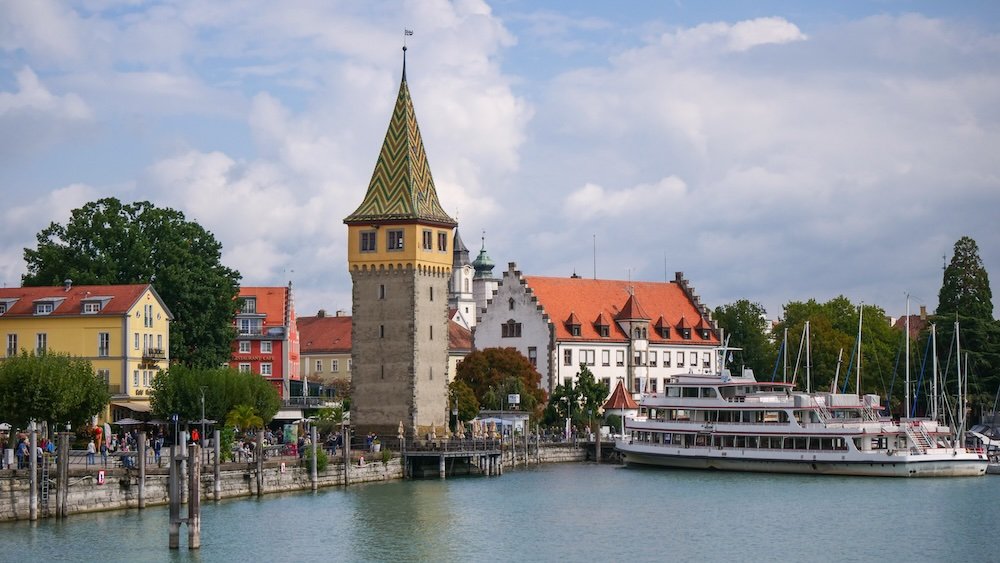
Day Trips From Lake Constance, Germany
Though Lake Constance itself teems with things to do, the surrounding region brims with equally alluring day trip possibilities. Below are five recommended escapes, each within comfortable reach, showcasing varied landscapes and cultural highlights. Pack your sense of adventure (and maybe a passport, depending on your route), and let’s expand your itinerary.
1) Rhine Falls (Switzerland)
Just over an hour from Konstanz lies Europe’s largest waterfall, the Rhine Falls near Schaffhausen. The roaring cascade tumbles dramatically, and you can hop on a boat tour that glides right up to its crashing base. Platforms on either side of the river let you observe the swirling mist and rainbow arcs, especially if the sun’s at the right angle. A medieval castle, Schloss Laufen, stands perched above, offering vantage points and small exhibits on local history. The vibe is both thrilling and scenic, a popular outing for families, photographers, and nature lovers alike. If you go mid-summer, water volumes often surge, amplifying the spectacle.
- Travel: Drive or catch a train from Konstanz to Schaffhausen, then local bus or short walk.
- Entry: Viewing platforms sometimes incur a small fee; boat rides cost extra.
- Food: On-site cafés and snack stalls handle those midday hunger pangs.
Tip: Bring a waterproof camera bag—the spray gets intense near the boat’s nose.
2) St. Gallen (Switzerland)
Another Swiss treat, St. Gallen boasts a UNESCO-listed Abbey District with a baroque cathedral and a famed abbey library. The library’s opulent interior—ceiling frescoes, ornate wooden shelves, and manuscripts—caters to any history or literature buff. Outside, the compact old town weaves pastel houses and bustling squares, reminiscent of medieval times. Artisanal shops line the lanes, selling Swiss chocolates or embroidered textiles, reflecting the city’s textile heritage. Grab a lunch featuring alpine cheeses or rosti (fried grated potato dish) to recharge. A few hours suffice for main attractions, but St. Gallen’s quiet charm might tempt you to linger longer.
- Transport: A direct train from Konstanz to St. Gallen typically takes around an hour.
- Cultural Extras: The city often hosts cultural festivals, especially in summer, blending music and street food.
- Souvenirs: Swiss linens or delicate embroidery pay homage to the region’s historic craft.
Tip: Check library hours—the Abbey Library can close mid-afternoon or on special holidays.
3) Lindau & Pfänder Mountain (Bregenz, Austria)
Though Lindau is on Lake Constance itself, it also serves as a gateway to Bregenz and the Pfänder mountain in Austria. After exploring Lindau’s harbor (with its lion statue and lighthouse), hop a short train or ferry to Bregenz. There, a cable car zooms up Pfänder, revealing panoramic vistas of the lake’s vast expanse and sometimes the snow-capped Alps. At the summit, you’ll find hiking trails, a small wildlife park, and a restaurant dishing up hearty Austrian cuisine. In summer, Bregenz’s lakeside stage hosts open-air operas, adding an artsy dimension to your day.
- Time Management: Plan a half-day for Lindau, half-day for Pfänder and Bregenz.
- Cable Car: Departures are frequent, but lines can form on weekends.
- Weather: Clear skies yield best alpine views—check forecasts to avoid a cloud-shrouded summit.
Tip: Combine an early Lindau stroll with a late-afternoon Pfänder trip, letting you catch sunset over the lake from the peak.
4) Triberg in the Black Forest
If you can’t resist the Black Forest’s charms, Triberg is about two hours from Lake Constance by car or a combo of train+bus. Famed for Germany’s highest waterfalls and whimsical cuckoo clocks, it’s a quaint mountain town. A short trail leads to the waterfall’s viewing platforms, where the roaring cascade plunges through evergreen woodland. The main street teems with shops selling intricately carved clocks and local souvenirs. If time allows, the Black Forest Museum provides glimpses into regional traditions—woodworking, glassblowing, and folk costumes. Round off your day with a slab of genuine Black Forest Cake or a hearty plate of spätzle.
- Car vs. Public Transport: Driving offers speed and flexibility; train routes involve transfers but remain scenic.
- Waterfall Fee: A small entrance charge, typically well worth it for the maintained paths.
- Souvenir: Triberg’s cuckoo clocks can be pricey but last generations.
Tip: Feed squirrels near the waterfall entrances—they’re famously fearless and might nibble from your hand.
5) Überlingen & Thermal Spa
Craving a spa day? Überlingen on the lake’s northern shore offers charming old-town ambiance and a well-known thermal bath. The lakefront promenade bustles with cafés and gelato stands, perfect for a breezy walk. Then, settle into the thermal complex, where indoor and outdoor pools beckon you to soak. Mineral-rich waters purportedly ease tension, while various saunas amp up the relaxation factor. Post-soak, meander the old town’s narrow lanes or catch a ferry across the lake for an extended vantage.
- Thermal Details: Separate sauna zones might be textile-free—read signage to avoid surprises.
- Promenade: Lined with flower beds, benches, and an inviting view of the Swiss shore.
- Evening Charm: Illuminated buildings reflect on the water, painting a romantic night scene.
Tip: Book spa time in advance if you’re visiting during a peak holiday weekend—slots may be limited.
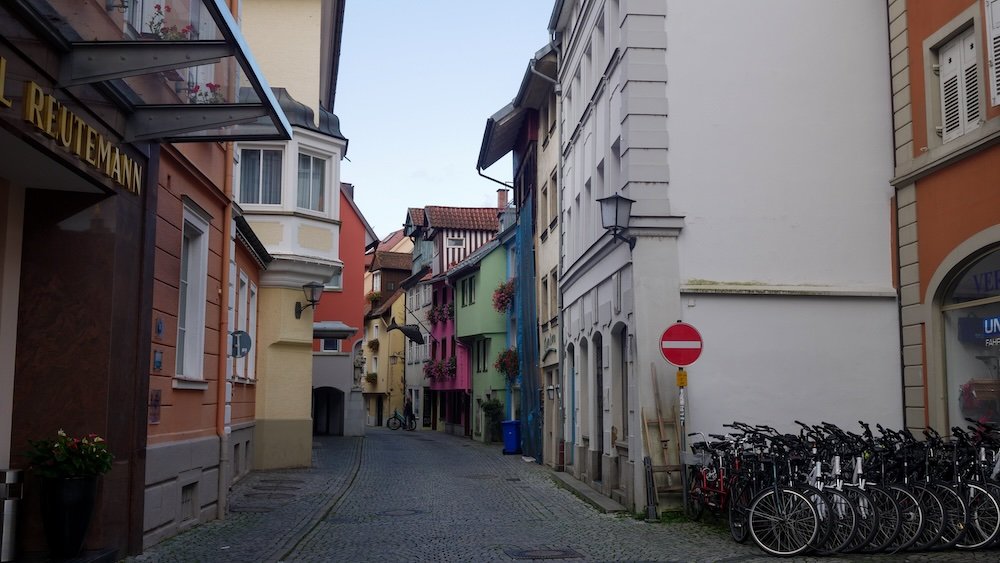
Lake Constance Transportation Guide
Efficient transportation around Lake Constance streamlines your things to do itinerary. Below, we parse the main ways to navigate the lake’s German side and, if you choose, cross into Austria and Switzerland. Embrace these tips to zip from medieval towns to vineyard slopes without hassle.
Ferries & Boat Services
Boats and ferries define Lake Constance’s travel charm. Frequent routes link Konstanz, Meersburg, and other points, cutting travel times while granting scenic rides. Some vessels transport cars or bikes, while smaller passenger ferries feel more like guided cruises. Summertime sees extended timetables for day-trippers or evening strollers. The ambiance on deck can be downright romantic—think breezy hair, sunset rays, and glimmering waters. Pricing varies by route length; day passes allow multiple hops if you plan a ferry-based lake tour.
- Ticket Tips: Buy from dockside counters or onboard machines, but arrive early to avoid queues.
- Seasonal Variation: Late autumn or winter schedules run less frequently, so double-check times.
- Multilingual: Many announcements come in German and English, but verifying route endpoints is wise.
Tip: Pick an upper deck seat for panoramic lake-to-hills views, capturing your journey in prime lighting.
Trains
Local rail lines encircle Lake Constance, linking principal towns: Konstanz, Radolfzell, Friedrichshafen, Lindau, and onward to Austrian or Swiss stations. Operators include Deutsche Bahn (in Germany) plus Swiss (SBB) or Austrian (ÖBB) lines near border areas. The ride is often scenic, hugging shores or passing orchard-laden slopes. Timetables are reliable, but watch for cross-border differences or possible track work. Regional day passes sometimes cover multiple stops, letting you hop on and off to explore villages.
- Konstanz Hub: A major node for changing between German, Swiss, and ferry connections.
- Advance Booking: Not strictly necessary for short local trips, but you can buy discounted tickets for longer routes.
- Peak Times: Trains can fill up on summer weekends or festival days—arriving early might secure a seat.
Tip: Carry a simple offline map—station signage might differ across countries, so a quick reference helps you confirm the correct platform.
Buses
Regional bus routes fill gaps where trains or ferries don’t go, especially inland or to smaller towns. In Germany, lines typically integrate with Deutsche Bahn’s system; schedules align with train arrivals, easing transitions. You’ll see bus stops near harbor areas or train stations, labeled with route numbers. Interiors are generally comfy, though peak tourist season can crowd popular lines. For cross-border travel—like to Switzerland or Austria—some specialized lines operate, but watch for possible additional fares. If you’ve got a Bodensee Card or local pass, it may include bus usage.
- Ticket Purchases: Onboard from drivers (cash helps), or from machines in larger stations.
- Frequencies: Often hourly or half-hourly in busier zones, thinning out evenings or Sundays.
- Language: Expect mostly German signage; drivers may speak basic English or know enough to confirm stops.
Tip: Download local transport apps—like “efa-bw” (Baden-Württemberg’s journey planner)—for real-time bus data.
Cycling & Bike Rentals
Cycling is massive around Lake Constance, given the scenic, relatively flat** Bodensee-Radweg** (Lake Constance Cycle Path). It circles the entire lake (about 270 km), crossing German, Austrian, and Swiss shores. Rentals are abundant in towns like Konstanz or Lindau; some hotels loan bikes, too. Dedicated lanes run along busy sections, while quieter stretches weave through orchards and villages. A multi-day cycle trip is feasible for fit travelers, but short one-day segments also delight casual riders. Ferries accommodate bikes for a small fee, letting you skip certain sections if you prefer.
- Popular Route: Radolfzell to Konstanz or Lindau is well-marked and scenic.
- Weather: Summer sunshine draws crowds, so start early to dodge midday heat.
- Storage: Stations and cities offer secure bike racks or lockers for short stops.
Tip: Wear bright clothing—drivers in rural areas may not expect a line of cyclists, especially on winding roads.
Driving & Car Ferries
A car can expedite deeper day trips, particularly if you aim to explore remote corners of the region. Highways and local roads around Lake Constance are well-maintained, though traffic can build up near major towns or border checkpoints. Parking in city centers is metered or in garages; “park & ride” facilities near train stations can help. Notably, ferry routes such as Konstanz–Meersburg accommodate vehicles, saving you a long drive around the lake. However, peak travel seasons see lines of cars waiting to board, so patience is key.
- Border Crossings: Minimal formalities under Schengen, but keep ID on hand.
- Fuel: Station availability is good, though Swiss gas can be pricier.
- Congestion: Weekend daytrippers or festival traffic can cause jams—try traveling earlier or midweek.
Tip: Keep coins for parking meters; not all machines accept cards, especially in smaller towns.
Boat Charters & Private Tours
If you prefer a more exclusive experience, private boat charters or guided sails are an option. Cruise at your own pace, anchor for a swim, or loop around scenic coves inaccessible by large ferries. This can be pricey, but for groups splitting costs, it becomes more reasonable. Some charters include a skipper who shares local lore or arranges a lakeside picnic. For a romantic twist, a sunset charter with champagne offers an unforgettable vantage of the lake’s shifting colors.
- Advance Booking: Charter boats can be scarce in peak months—reserve weeks ahead.
- Licensing: If operating the boat yourself, check if your driver’s license is valid for motorboats here.
- Customizable: You might combine a tour with stops at waterfront restaurants or hidden beaches.
Tip: Negotiate itinerary—captains often tailor routes to your interests, from photography hotspots to calmer waters for a dip.
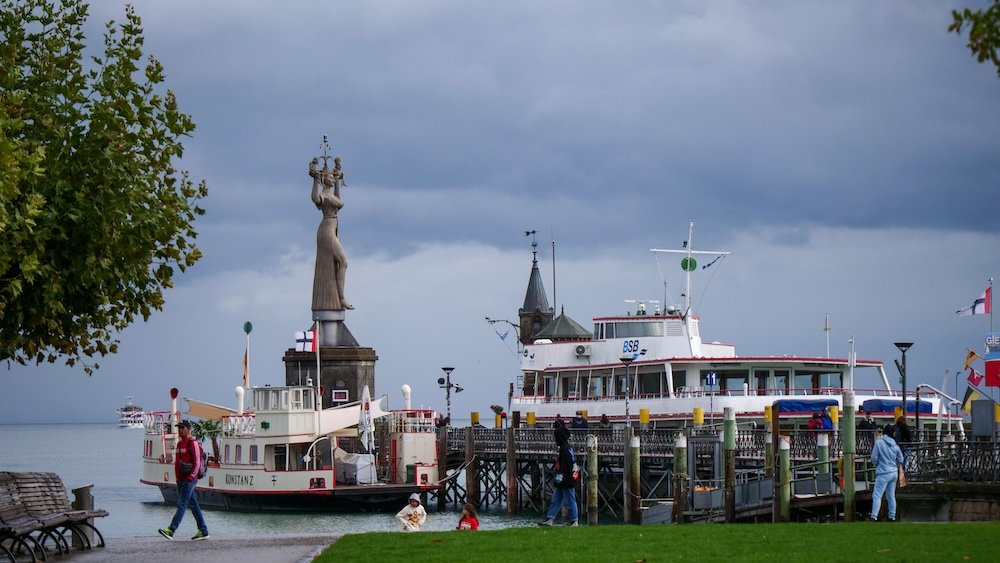
Lake Constance Travel Guide: Conclusion
Lake Constance transcends the usual lake destination clichés. Yes, the water is serene and photogenic, and yes, you’ll find breezy lakeside promenades and lively resort towns. But beneath the surface, a more layered identity emerges—one shaped by centuries of cross-border trade, wine-growing traditions, and a modern zest for eco-conscious living. Touring its perimeter involves drifting between German efficiency, Swiss precision, and Austrian charm, all while sampling a wide variety of local tastes—fresh fish, orchard fruits, and spätzle in cozy taverns.
No matter your travel style, the area offers things to do that can fill a quick weekend or span an entire multi-week break. Culture lovers can explore medieval towns like Meersburg or Konstanz, soaking up centuries of architectural heritage. Foodies get their fill by stopping at farmers’ markets, vineyard tastings, or simple wayside stands selling orchard-fresh produce. Nature enthusiasts roam orchard-lined cycle paths, hike vantage points near Lindau, or kayak across gentle waves. Family attractions, such as Mainau’s floral spectacle or the Pfahlbaumuseum’s stilt-house reenactments, keep young ones engaged and wide-eyed.
Final Thoughts
One of Lake Constance’s biggest assets is its accessibility and variety of transport. Ferries double as scenic mini-cruises, while local trains reliably bridge the region’s cultural enclaves. If you crave spontaneity, renting a bike or car grants you the freedom to chase hidden inlets and backroad discoveries. Meanwhile, accommodations range from lakeside luxury hotels to cozy farm stays, ensuring you can fine-tune your comfort level and budget. And if you’re feeling truly adventurous, hop across borders for a day trip—like heading to the Rhine Falls or the Swiss city of St. Gallen—without missing dinner back on the German shore.
What resonates most, though, is the lake’s subtle but undeniable synergy of tradition and progress. Small towns boast well-preserved medieval squares, yet they also host farmers pioneering new sustainability methods. Cozy wine taverns rub shoulders with modern brewpubs. Artisan cheese makers adopt solar power, reflecting a collective ethos that respects the environment while celebrating culinary heritage. This interplay of old and new, local and international, fosters a welcoming spirit that you’ll feel in the bustling markets and tranquil fishing harbors alike.
